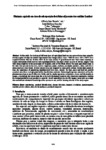Use este identificador para citar ou linkar para este item:
http://www.alice.cnptia.embrapa.br/alice/handle/doc/1035214Registro completo de metadados
| Campo DC | Valor | Idioma |
|---|---|---|
| dc.contributor.author | LUIZ, A. J. B. | pt_BR |
| dc.contributor.author | SANCHES, I. D. A. | pt_BR |
| dc.contributor.author | TRABAQUINI, K. | pt_BR |
| dc.contributor.author | EBERHARDT, I. D. R. | pt_BR |
| dc.contributor.author | FORMAGGIO, A. R. | pt_BR |
| dc.date.accessioned | 2016-01-26T11:11:11Z | pt_BR |
| dc.date.available | 2016-01-26T11:11:11Z | pt_BR |
| dc.date.created | 2016-01-26 | pt_BR |
| dc.date.issued | 2015 | pt_BR |
| dc.identifier.citation | In: SIMPÓSIO BRASILEIRO DE SENSORIAMENTO REMOTO, 17., 2015, João Pessoa. Anais... São José dos Campos: INPE, 2015. p. 1308-1315. | pt_BR |
| dc.identifier.uri | http://www.alice.cnptia.embrapa.br/alice/handle/doc/1035214 | pt_BR |
| dc.description | Abstract: In this study, the tracking of different types of agricultural land use was assessed over time using the overlap regions of adjacent Landsat Operational Land Imager (OLI) scenes. WRS-II scenes 219 e 220/75 were acquired between July and October 2014. In the same period, 55 georeferenced sites were visited monthly, to acquire information about their use and to photograph them. The study covered an area of 100 km long by 4 km wide along a highway in the mesoregion of Campinas, state of São Paulo, Brazil. The main agricultural crops in the state were present in this area, such as sugarcane, maize, soybean, eucalyptus, pastures, citrus; and over a dozen land uses were found. Several selected areas are irrigated by center pivot systems. In this short period of time, the importance of monitoring simultaneously three axes, namely: the time, space and land use, proved essential, since there is a high potential for classification confusion. Interesting things were observed, such as the phenomenon of green-up of rubber tree fields; and the similar appearance of potatoes, beans and wheat plots in images, even though they do not look like in the field. Preliminary analysis, both visual and quantitative, confirm the assumption that it is not possible to correctly classify agricultural uses in OLI images based only on a single date and without substantial knowledge of the systems in use, and the farming calendar of the study region. | pt_BR |
| dc.language.iso | por | pt_BR |
| dc.rights | openAccess | pt_BR |
| dc.subject | Cropland identification | pt_BR |
| dc.subject | Change detection | pt_BR |
| dc.subject | Temporal resolution | pt_BR |
| dc.subject | Monitoramento | pt_BR |
| dc.subject | Identificação de culturas | pt_BR |
| dc.subject | Detecção de mudanças | pt_BR |
| dc.subject | Resolução temporal | pt_BR |
| dc.title | Dinâmica agrícola em área de sobreposição de órbitas adjacentes dos satélites Landsat. | pt_BR |
| dc.type | Artigo em anais e proceedings | pt_BR |
| dc.date.updated | 2016-01-26T11:11:11Z | pt_BR |
| dc.subject.thesagro | Sensoriamento remoto | pt_BR |
| dc.subject.thesagro | Uso da terra | pt_BR |
| dc.subject.nalthesaurus | Remote sensing | pt_BR |
| dc.subject.nalthesaurus | Land use change | pt_BR |
| dc.subject.nalthesaurus | Cropland | pt_BR |
| dc.subject.nalthesaurus | monitoring | pt_BR |
| riaa.ainfo.id | 1035214 | pt_BR |
| riaa.ainfo.lastupdate | 2016-01-26 | pt_BR |
| dc.contributor.institution | ALFREDO JOSE BARRETO LUIZ, CNPMA; IEDA DEL'ARCO SANCHES, INPE; KLEBER TRABAQUINI, INPE; ISAQUE DANIEL ROCHA EBERHARDT, INPE; ANTONIO ROBERTO FORMAGGIO, INPE. | pt_BR |
| Aparece nas coleções: | Artigo em anais de congresso (CNPMA)  | |
Arquivos associados a este item:
| Arquivo | Descrição | Tamanho | Formato | |
|---|---|---|---|---|
| 2015AA004.pdf | 1,17 MB | Adobe PDF |  Visualizar/Abrir |









